
TUDOR Black Bay vs Pelagos vs Royal: Which TUDOR Watch Should You Buy in the UK in 2025?
Compare Tudor Black Bay, Pelagos (Ultra, 39, FXD) and Royal in 2025. Discover specs, prices, and the best pre-owned Tudor watches in the UK at MVS Watches
Yoshikazu Akahane had the vision and determination to create a traditional watch powered by a mainspring that could achieve the one-second-a-day accuracy rivalling electronic timepieces of the era. A brilliant and persistent engineer, Akahane spent over two decades overcoming countless setbacks, producing over 600 prototypes in the process. His relentless pursuit led to groundbreaking advancements across every facet of watchmaking. In 1999, his perseverance paid off with the birth of the revolutionary Spring Drive.
Although the first Spring Drive watch debuted in 1999, it took an additional four years of intensive refinement before the creation of the first Grand Seiko 9R Spring Drive. To meet Grand Seiko’s exacting standards, the movement was upgraded from a manually wound system with a 48-hour power reserve to an automatic system offering an impressive 72-hour power reserve. This upgrade incorporated the Magic Lever mechanism, originally developed in 1959, now enhanced for better productivity, durability, and winding efficiency. Today, the Caliber 9R65 stands as the benchmark of the 9R Spring Drive movements, powering many Grand Seiko models.
The Spring Drive is driven by a traditional mainspring, making it completely self-sufficient without the need for a battery or external power source. Energy is stored by winding the mainspring, either manually via the crown or automatically through wrist movement. This energy is transferred through the gear train to move the watch hands as the mainspring gradually unwinds. Harnessing the high torque of the mainspring, the Spring Drive achieves its iconic smooth glide motion, effortlessly powering long, wide hands without requiring additional power sources.
The development of the Spring Drive revolved around the challenge of energy generation and management, ultimately solved with the creation of the Tri-Synchro Regulator. This innovative device generates a small electrical current from the motion of the mainspring to power a quartz oscillator and an electronic brake. The system works similarly to a pedal-powered bicycle light: a rotor (or glide wheel) connected to the gear train interacts with a stator wound with wire to generate power. The glide wheel rotates eight times per second, producing a tiny electric current to activate the quartz oscillator and IC. The quartz oscillator vibrates at 32,768 Hz, sending a precise reference signal to the IC, which compares it with the glide wheel’s speed. If the glide wheel moves too fast, a magnetic brake is applied to regulate its speed, ensuring precise movement of the gear train and hands.
To sum it up the Tri-Synchro Regulator harmonises three types of energy: mechanical (from the mainspring), electrical (to power the quartz oscillator and IC), and electromagnetic (to apply the brake). Together, these forces regulate the mainspring’s unwinding, achieving the precise and fluid motion that defines the Spring Drive.
Three-hand versions of the Spring Drive feature over 200 components, while complex versions, like the chronograph editions, exceed 300. All meticulously assembled by hand. Ensuring smooth operation, lubricating oils are applied to no fewer than 80 points in the three-hand calibre and 140 in the chronograph. This delicate process, requiring exceptional skill and care, is done entirely by hand to guarantee precision.
With tolerances measured to one hundredth of a millimetre, the Spring Drive’s design exemplifies meticulous engineering. However, it is the final hand adjustments and refinements by master watchmakers that elevate the timepieces to their renowned accuracy and craftsmanship. Achieving what no machine could replicate.

It took another 5 years for the Spring Drive to become publicly available to purchase with the launch of 9R6, providing an accuracy of -1/+1 second a day. By 2006, Grand Seiko had further improved on this technology with the 9S67. By developing a mainspring that was 10cm longer and wider than in the previous movement, the power reserve was vastly improved to 72 hours (3 days).
In 2016, the very first Grand Seiko watch was created by the world-renowned watchmakers in the Micro Artist Studio at Shiojiri in central Japan. That watch was the Spring Drive 8 Day Power Reserve. The remarkable 192 hours power reserve of Calibre 9R01 is achieved through the use of three mainspring barrels arranged in sequence for increased energy capacity. To optimise efficiency, the movement is engineered to minimise friction, with precise manufacturing and polishing reducing energy loss. Additionally, the removal of the intermediate wheel improves energy transmission efficiency by 10%.
In a groundbreaking design, Grand Seiko replaced the traditional multi-bridge assembly with a single, one-piece bridge. This innovative system enhances durability and secures components with greater precision. The one-piece bridge, three times thicker than those in other Spring Drive calibres, provides a robust foundation while also improving shock resistance by better protecting the gear shafts. Enabled by advanced precision engineering, this design exemplifies the perfect fusion of durability, efficiency, and craftsmanship.
Paraphrasing Grand Seiko, do the planets shudder or ‘tick’ as they traverse the heavens? Certainly not. Time flows continuously and silently, and it is this natural essence of time that Seiko Spring Drive captures. As the only watch in the world to tell time as nature itself does, Spring Drive delivers a seamless, fluid motion, embodying the quiet and unbroken rhythm of the universe.
MVS Watches presents both the Grand Seiko “Shunbun” Cherry Blossom and “Hotaka Peaks” GMT watches below. The pinnacle of Japanese horology and master craftsmanship. Free UK delivery and PayPal options available.

Compare Tudor Black Bay, Pelagos (Ultra, 39, FXD) and Royal in 2025. Discover specs, prices, and the best pre-owned Tudor watches in the UK at MVS Watches
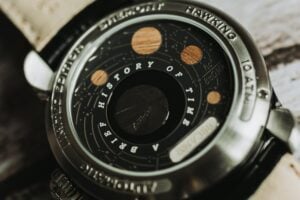
Discover the incredible story behind the Bremont Hawking watch – containing pieces of Stephen Hawking’s actual desk, meteorite, and original research papers
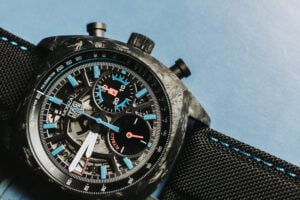
Discover why the TAG Heuer Monza Flyback is the pinnacle of racing chronographs. Carbon fibre case, COSC-certified flyback complications and motorsport heritage
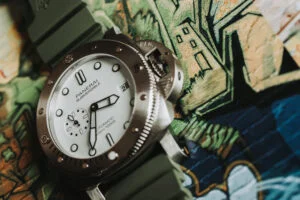
Compare Panerai Luminor vs Submersible with real models in stock. See specs, pros, and who each watch suits.
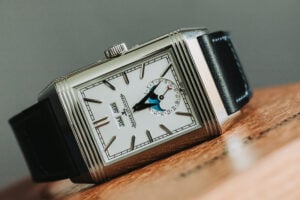
Expert review of the Jaeger-LeCoultre Reverso Duoface Calendar Q3918420. Technical analysis, investment value, and authentication guide for this iconic dual time zone watch with calendar complications
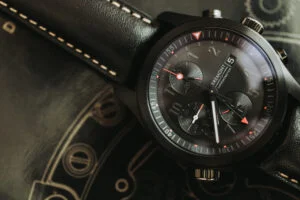
Bremont ALT1-B review: Why this £2,995 British GMT chronograph with Trip-Tick case rivals Swiss luxury watches. Discontinued model analysis